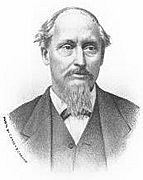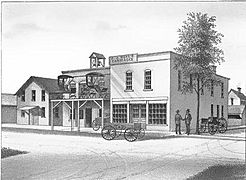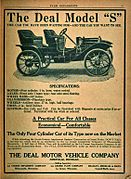J.J. Deal and Son Carriage Factory facts for kids
Quick facts for kids |
|
|
J.J. Deal and Son Carriage Factory
|
|

J.J. Deal and Son Carriage Factory, Jonesville, Michigan, built in portions from 1893 to 1909. Now the Heritage Lane Apartments.
|
|
| Location | 117 West St., Jonesville, Michigan |
|---|---|
| Area | 1 acre (0.40 ha) |
| Built | 1893 |
| Architectural style | Commercial Style |
| NRHP reference No. | 12000456 |
| Added to NRHP | August 1, 2012 |
The J.J. Deal and Son Carriage Factory was once the biggest factory in Jonesville, Michigan. It's special because it's the only factory from the 1800s still standing in the city. You can find it at 117 West Street. On August 1, 2012, this important building was added to the National Register of Historic Places. Later, in 2015, the factory was turned into apartments called the Heritage Lane Apartments.
Contents
The Story of J.J. Deal and Son
Jacob J. Deal was a blacksmith, someone who works with metal. He moved to Jonesville, Michigan in 1857. When he arrived, Jacob started making a few lumber wagons and other heavy wagons.
In 1865, Jacob sold his blacksmith shop. He then built two small buildings across the street. Here, he began making wagons and carriages full-time. His business grew, so he kept making his factory bigger.
Building the Factory
In 1890, Jacob started building a new factory. This building is the main part of the structure you see today. More sections were added to the building between 1893 and 1909. Eventually, the factory employed over 100 people.
In 1891, Jacob's son, George, joined the company. George started managing the business. The company was then renamed J.J. Deal and Son.
Making Early Cars
In 1908, the company began making automobiles. They called these early cars "Autobuggies." The company changed its name again, becoming the Deal Buggy Company. By 1910, the number of workers grew to 140.
The company made several models of the Deal Automobile from 1908 to 1911. These cars cost between $950 and $1,250. Sadly, the company closed down in 1915.
Factory's Later Life
After the Deal Buggy Company closed, other businesses used the factory building.
- 1922: The Universal Body Company moved in. They made bodies for motor buses.
- 1927: The Kiddie Brush & Toy Company took over. They made children's toy housekeeping sets under the "Susy Goose" name.
- 1949: They started making plastic toys using a process called injection molding.
- 1960s: They even made furniture and accessories for Barbie and Ken dolls for Mattel!
- 1967: The company moved its main office to Edon, Ohio.
- 1972: The J.R. Headers Company used the space for a short time, leaving in 1976.
Becoming Apartments
For about 40 years, the building was mostly empty or not fully used. Then, in 2014, a plan was approved to turn it into homes. Construction started in 2015. The goal was to create "Heritage Lane Apartments." These apartments would provide homes for 44 families across four floors.
The construction finished in July 2016. The finished building now has a computer room and a library for residents. It also has offices for management and maintenance. In the lobby, you can see an original J.J. Deal Buggy from the 1890s. A special Michigan historic marker outside the building tells its story.
Building Design
The J.J. Deal and Son Carriage Factory is a four-story brick building. It has a long, rectangular shape. The front of the building has three main sections. These sections are separated by brick columns. The middle section has an entrance with a window above it. The side sections and upper floors have windows that open from the middle.
Brick lines run across the top of the third and fourth floors. The side of the building has 30 evenly spaced openings on each floor. Two openings on the first floor are entrances. The rest are windows, just like those on the front.
This building is a good example of factory buildings from the late 1800s. Many similar factories were built in Michigan and across the United States during that time.
Gallery






